Supportive writing strategies for teaching young students can be as easy as one, two, three.
Let’s be honest. Have you ever had one of those days when you’re in the middle of a writing lesson, and you look out to those beautiful little faces, and all you see is absolutely nothing?
Each of the little faces is looking back at you, completely bewildered. It’s like you speak another language. The students have no idea what you’re saying.
Then, to top it off, you’re short on time, so you go ahead and give the students the writing assignment. (Why not? You’ve given the lesson, so now it’s their turn. They can write to the prompt.)
Only to be hit with complete silence and the sheer lack of writing.
That’s when it all sinks in. You realize you didn’t include the essential elements to set your students up for success. (Total teacher fail!)
Well, I know I’ve been there, and that’s why I have since included these strategies in my lessons. In fact, the more time spent on these writing lesson strategies, the better the writing outcome.
Although there are many valuable strategies for teaching writing, I have narrowed this blog post to three of my must-have elements for EVERY lesson.
Let’s dive into the three strategies that will get your students writing with ease and confidence.
Visuals come in many forms. This writing strategy support can make or break it for a young writer.
A visual may be an image from a story, photographs, clipart, a historical artifact, or even a piece of art, to name a few.
Whatever the topic is, providing students time for analyzing or inquiring is essential in supporting young writers in the pre-writing stage.
Visuals help students imagine what they need to write BEFORE picking up a pencil.
For example, if I wanted students to write about their community, I would have several photographs of various community workers, activities, and settings.
Students would be able to use the visual to deepen their understanding of the community. They can then apply their knowledge to their community settings.
Once students have their creative juices flowing through the visual, you can include another writing strategy known as “turn and talk.”
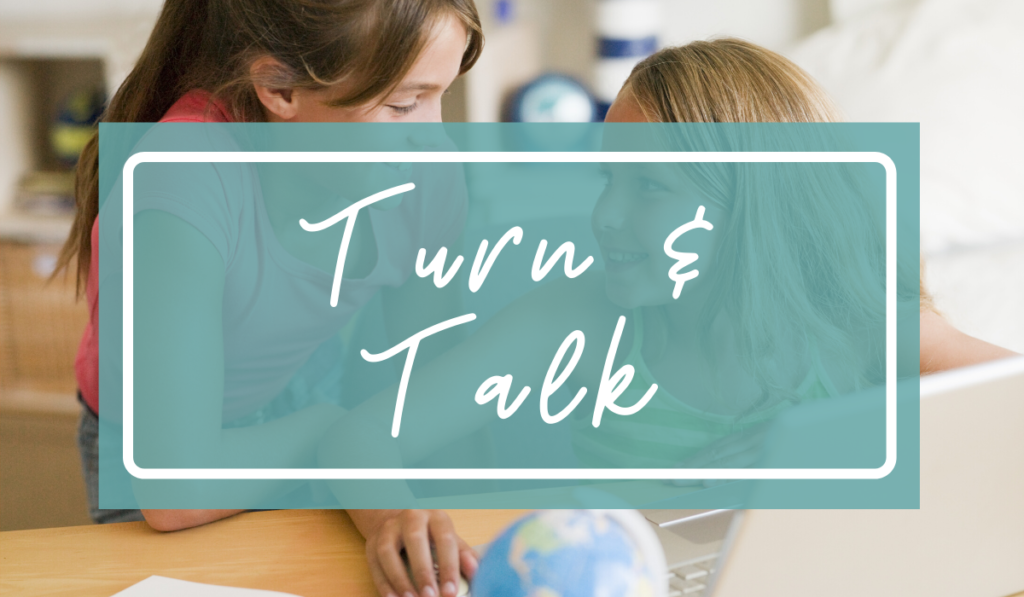
“Turn and Talk” my most often used phrase and my favorite student support.
This engagement strategy doesn’t include the actual act of writing yet. Instead, it’s time to provide students with opportunities to talk, discuss their thoughts, and reflect. I think of this engagement strategy as a pre-writing requirement.
Not only do you keep students engaged, but you allow students to deepen their thinking when sharing ideas.
A simple example is “share one activity you did in your community this weekend. Turn and talk.”
As each student takes turns discussing their activities, they build upon one another’s statements while adding more relevant information as the discussion progresses.
The process of verbalizing thoughts prepares the student for writing. (No, that’s some valuable time well spent!)
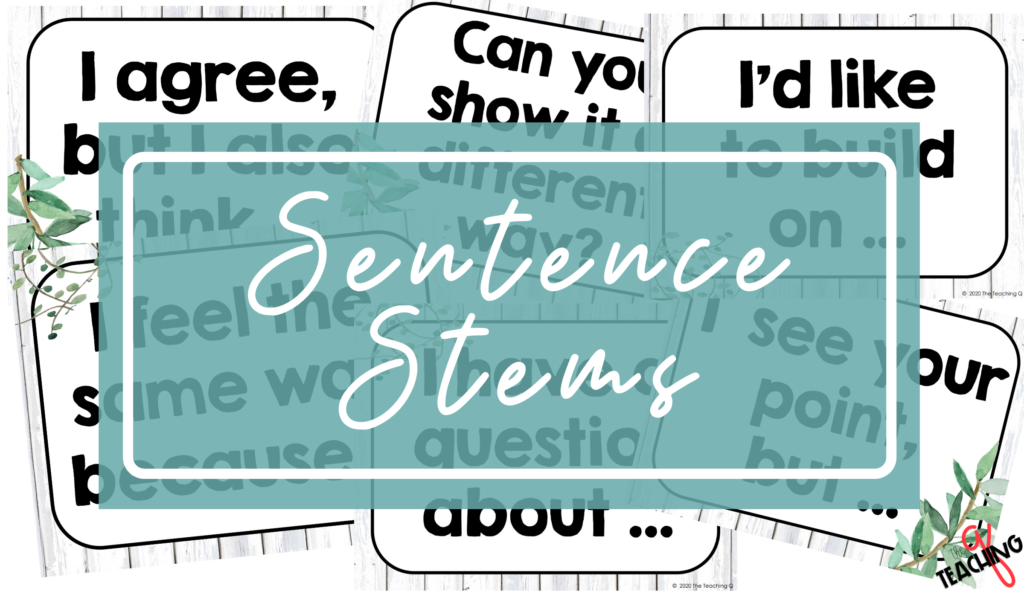
Another writing strategy would be including and preparing sentence stems to support the young writer. I mention sentence stems now because they encompass the visual and talking elements together.
For many students, the aid of a sentence stem can make it or break it for them.
Sentence stems to support students by:
Using my previous example, I would display the sentence stem; This weekend, I __________ in my community.
Students are provided with time to think about their responses while using the visual and sentence stem. And yes, then they “turn and talk.”
It’s just another form of preparing the students for writing while avoiding unnerving blank stares.
If you would like to see the versatile sentence stems I use for all lessons, you can check them out here.
Another writing strategy is to arm your students with essential materials needed. That’s right. They’re necessary because they support young writers with a quick reference to avoid writer’s block or interrupt the writing flow.
Here’s a list of my “must-have” materials for elementary writing success.
Let’s talk about one last writing strategy, the writing rubric. Yes, in my book, teaching students the elements on a rubric is another writing strategy. Let me explain myself.
I don’t know about you, but I was the student that wanted to know precisely “what is good” in the eyes of my teacher. The only problem was, I was too shy to ask. Now that’s a problem!
In comes the writing checklist.
Don’t get me wrong. The rubric or writing checklist is just a simple paper. But oh, how powerful it can be when used throughout the writing process!
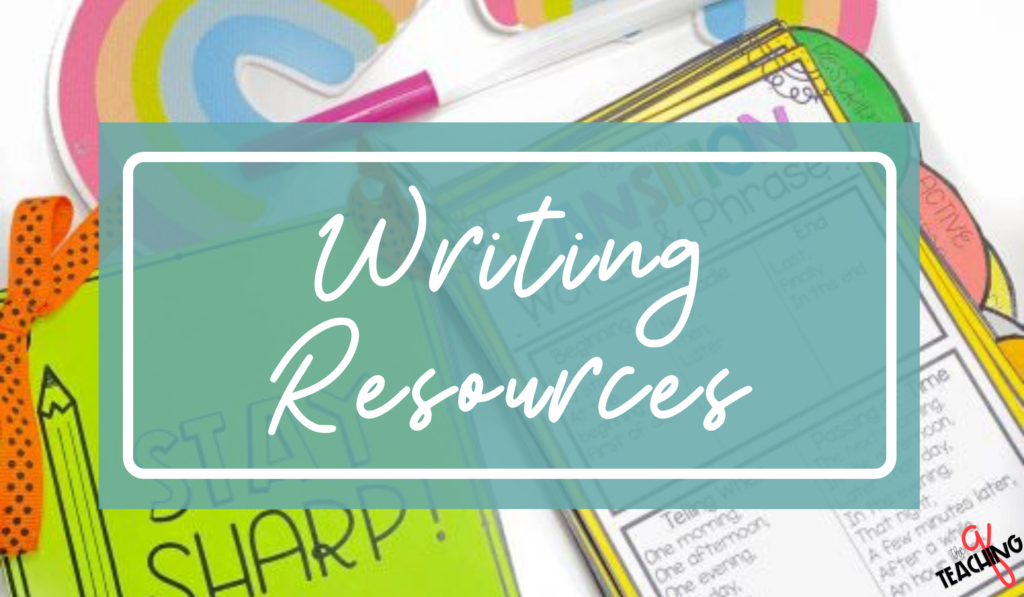
If you’re interested in providing your students will the essential writing materials, you’re in luck! I’ve got you covered.
Since I believe so strongly that students need writing material at their fingertips, I created a complete Writing Resource Folder for printing and digital versions.
The Writing Resource Folder provides all the materials a young writer would need. Best of all, the resource is flexible!
I’ve set up support in four different ways in my classroom. (I know, four different ways!)
Why? So students have the materials at ALL times in any location. Here’s what I’ve done. I created:
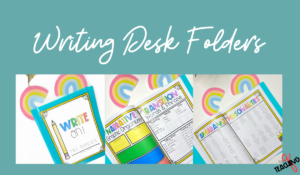
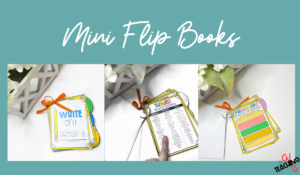
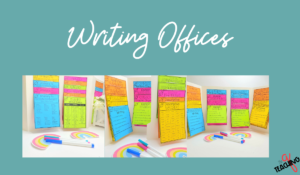
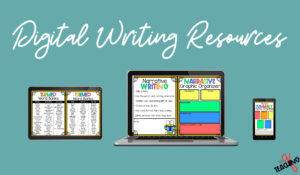
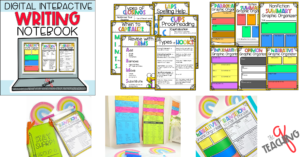
By providing the materials, my students are ready and eager to write. Students are confident they will have the support needed to be successful.
If you’d like to set your students up for success, too, here’s where you can grab the complete BUNDLE of Printable & Digital Writing Folders.
Click here if you’re strictly interested in the EDITABLE printable version. But if you’re like me and want students to have access at home, too, you can get the Digital Interactive Writing Notebook here.
While we are on the subject of writing, make sure your students have a solid grasp of paragraph writing. Check out my FREE Structured Paragraph Handbook, which will guide you and your students through the steps needed to create the perfect paragraph.
Writing strategies may vary, but rest assured, no more blank stares. These three strategies will light your class on fire!